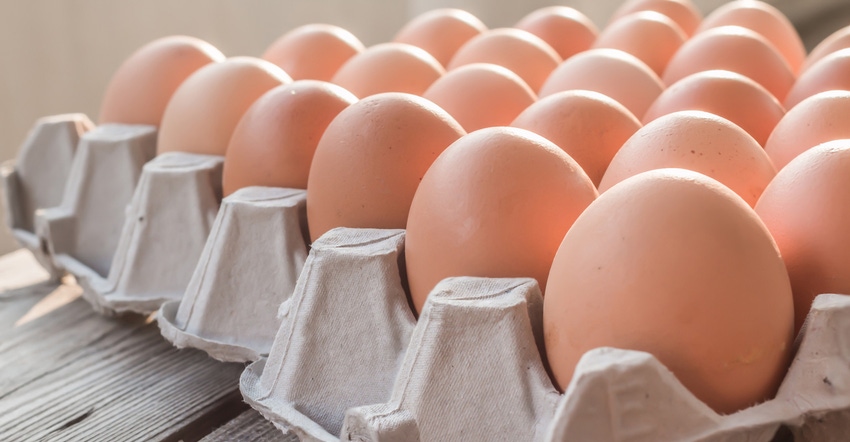Egg-laying chicken numbers were already on the decline and the emergence of bird flu is adding to a tight supply.

By Elizabeth Elkin and Allison Smith
Highly pathogenic avian influenza is back in the U.S., forcing farmers to cull flocks and pushing up egg prices at a time of rampant food inflation.
The deadly virus has been hitting poultry operations along the East Coast and Midwest, including top producer Iowa, where a farm was recently forced to cull nearly a million birds.
The lost production is starting to push up egg prices right before Easter, a time of peak demand, said Karyn Rispoli, an egg market reporter at commodity researcher Urner Barry. Buyers are stocking up to head off any looming supply disruptions. More expensive commodity egg prices could soon trickle down to grocery stores, adding to pain that consumers are already feeling with inflation rising at the fastest pace in four decades.
“While there’s no such thing as a ‘good’ time for bird flu, the timing of this one couldn’t be worse, with Easter only five weeks away,” she said.
According to Urner Barry, wholesale eggs jumped 10 cents to $1.60 a dozen Wednesday, which is the biggest single-day gain since the onset of Covid-19. For comparison, the five-year average for this time of year is $1.44. And prices will likely keep climbing in the coming weeks, according to John Brunnquell, chief executive officer of producer Egg Innovations.
“Bidding remains very strong among different egg companies, and so you’re going to see significantly higher” prices at grocery stores, he said.
During the last outbreak in 2015, egg prices touched records after 50 million laying hens across 15 states had to be culled at a cost of nearly $1 billion to the federal government. This time around, Brunnquell said, egg producers have been doing an effective job of stopping the spread. But one concern is that wild birds are migrating, and they’re major vectors for the virus.
The emergence of bird flu is adding to a tight supply situation. Egg-laying chicken numbers were already on the decline, Stephens analyst Ben Bienvenu said in a phone interview.
“When you layer that on top of that what’s going on with avian influenza, and the precedent of 2015, the impact on the market could be material,” he said.
He expects outbreaks to ease somewhat by June as migration lessens.
--With assistance from Michael Hirtzer and Dominic Carey.
To contact the authors of this story:
Elizabeth Elkin in New York at [email protected]
Allison Smith in New York at [email protected]
© 2022 Bloomberg L.P.
About the Author(s)
You May Also Like



